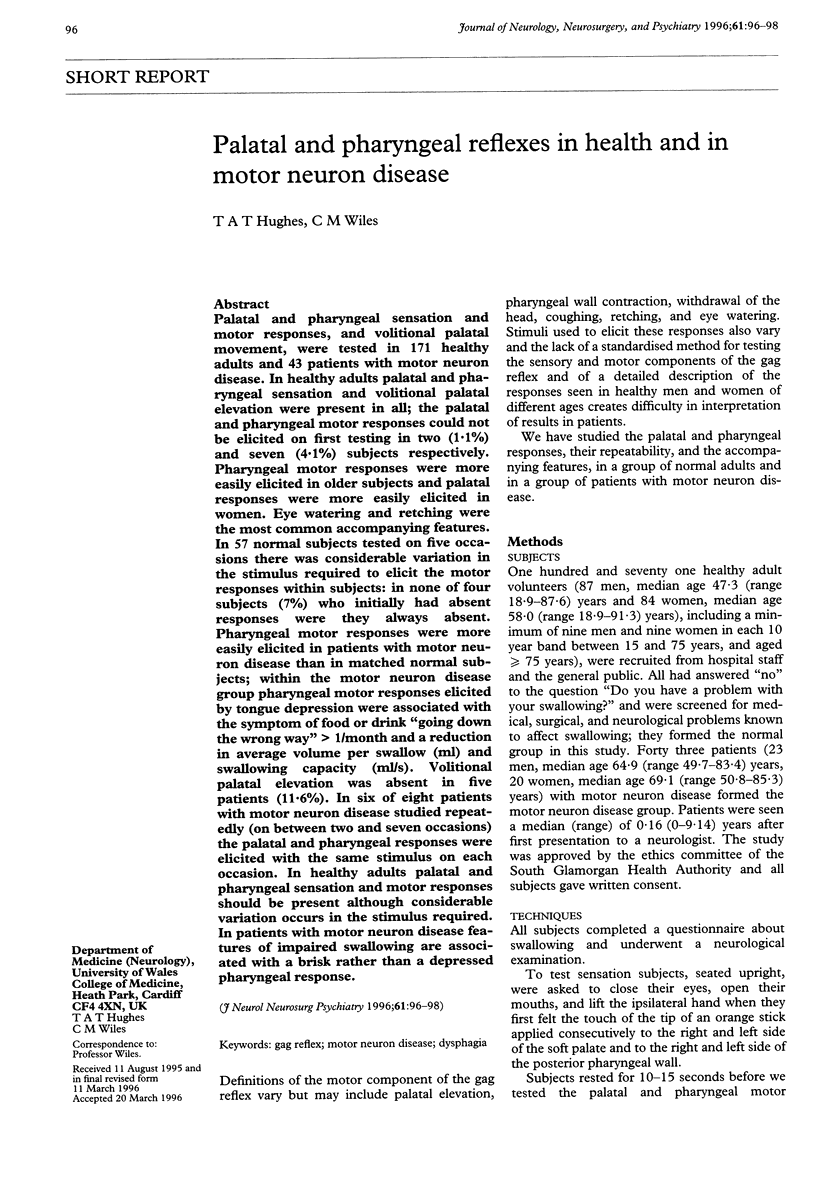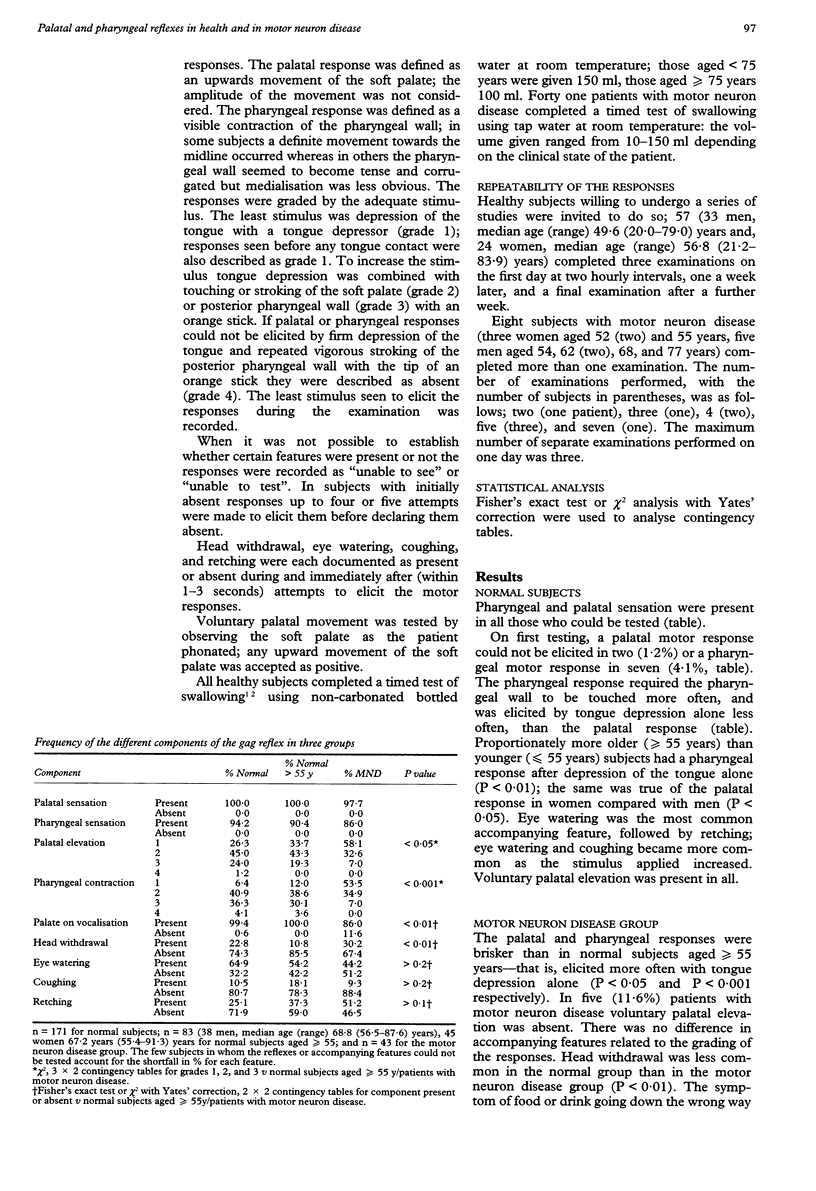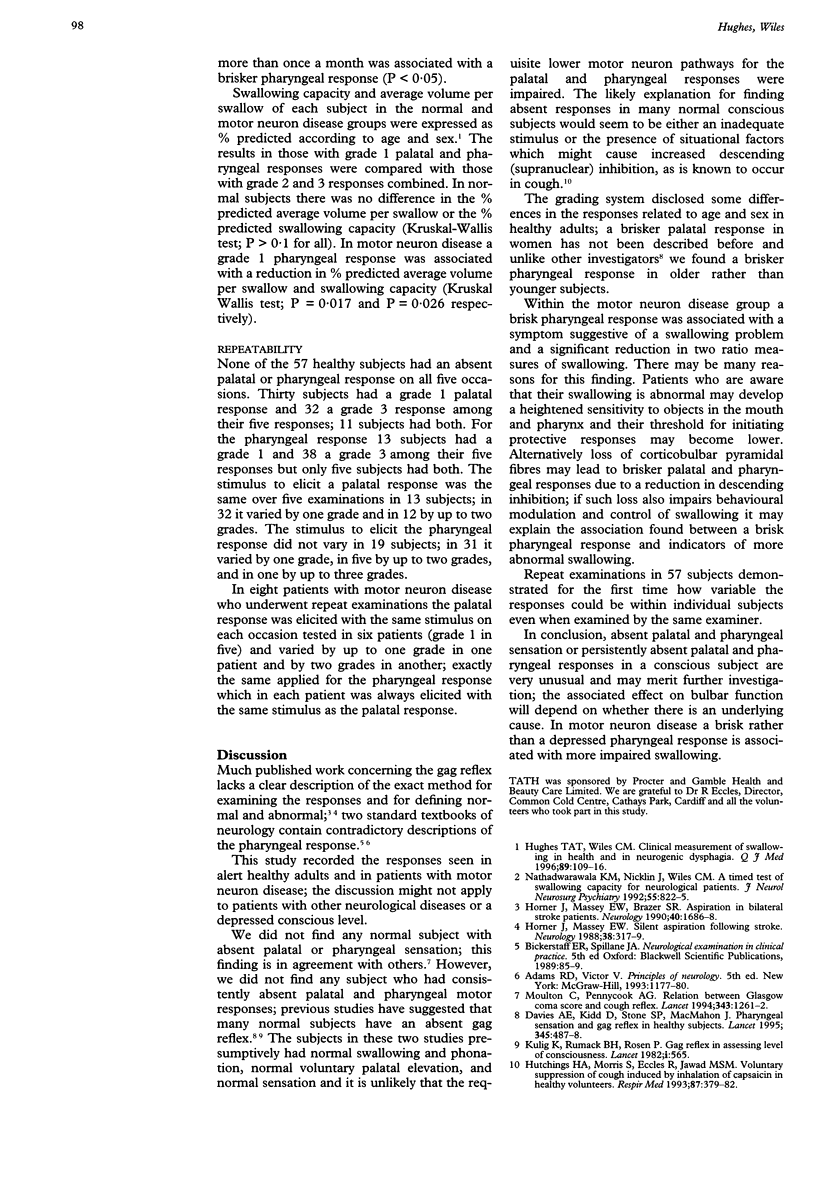Abstract
Palatal and pharyngeal sensation and motor responses, and volitional palatal movement, were tested in 171 healthy adults and 43 patients with motor neuron disease. In healthy adults palatal and pharyngeal sensation and volitional palatal elevation were present in all; the palatal and pharyngeal motor responses could not be elicited on first testing in two (1.1%) and seven (4.1%) subjects respectively. Pharyngeal motor responses were more easily elicited in older subjects and palatal responses were more easily elicited in women. Eye watering and retching were the most common accompanying features. In 57 normal subjects tested on five occasions there was considerable variation in the stimulus required to elicit the motor responses within subjects: in none of four subjects (7%) who initially had absent responses were they always absent. Pharyngeal motor responses were more easily elicited in patients with motor neuron disease than in matched normal subjects; within the motor neuron disease group pharyngeal motor responses elicited by tongue depression were associated with the symptom of food or drink "going down the wrong way" > 1/month and a reduction in average volume per swallow (ml) and swallowing capacity (ml/s). Volitional palatal elevation was absent in five patients (11.6%). In six of eight patients with motor neuron disease studied repeatedly (on between two and seven occasions) the palatal and pharyngeal responses were elicited with the same stimulus on each occasion. In healthy adults palatal and pharyngeal sensation and motor responses should be present although considerable variation occurs in the stimulus required. In patients with motor neuron disease features of impaired swallowing are associated with a brisk rather than a depressed pharyngeal response.
Full text
PDF


Selected References
These references are in PubMed. This may not be the complete list of references from this article.
- Davies A. E., Kidd D., Stone S. P., MacMahon J. Pharyngeal sensation and gag reflex in healthy subjects. Lancet. 1995 Feb 25;345(8948):487–488. doi: 10.1016/s0140-6736(95)90584-7. [DOI] [PubMed] [Google Scholar]
- Horner J., Massey E. W., Brazer S. R. Aspiration in bilateral stroke patients. Neurology. 1990 Nov;40(11):1686–1688. doi: 10.1212/wnl.40.11.1686. [DOI] [PubMed] [Google Scholar]
- Horner J., Massey E. W. Silent aspiration following stroke. Neurology. 1988 Feb;38(2):317–319. doi: 10.1212/wnl.38.2.317. [DOI] [PubMed] [Google Scholar]
- Hughes T. A., Wiles C. M. Clinical measurement of swallowing in health and in neurogenic dysphagia. QJM. 1996 Feb;89(2):109–116. doi: 10.1093/qjmed/89.2.109. [DOI] [PubMed] [Google Scholar]
- Hutchings H. A., Morris S., Eccles R., Jawad M. S. Voluntary suppression of cough induced by inhalation of capsaicin in healthy volunteers. Respir Med. 1993 Jul;87(5):379–382. doi: 10.1016/0954-6111(93)90052-2. [DOI] [PubMed] [Google Scholar]
- Kulig K., Rumack B. H., Rosen P. Gag reflex in assessing level of consciousness. Lancet. 1982 Mar 6;1(8271):565–565. doi: 10.1016/s0140-6736(82)92074-8. [DOI] [PubMed] [Google Scholar]
- Moulton C., Pennycook A. G. Relation between Glasgow coma score and cough reflex. Lancet. 1994 May 21;343(8908):1261–1262. doi: 10.1016/s0140-6736(94)92155-5. [DOI] [PubMed] [Google Scholar]
- Nathadwarawala K. M., Nicklin J., Wiles C. M. A timed test of swallowing capacity for neurological patients. J Neurol Neurosurg Psychiatry. 1992 Sep;55(9):822–825. doi: 10.1136/jnnp.55.9.822. [DOI] [PMC free article] [PubMed] [Google Scholar]


